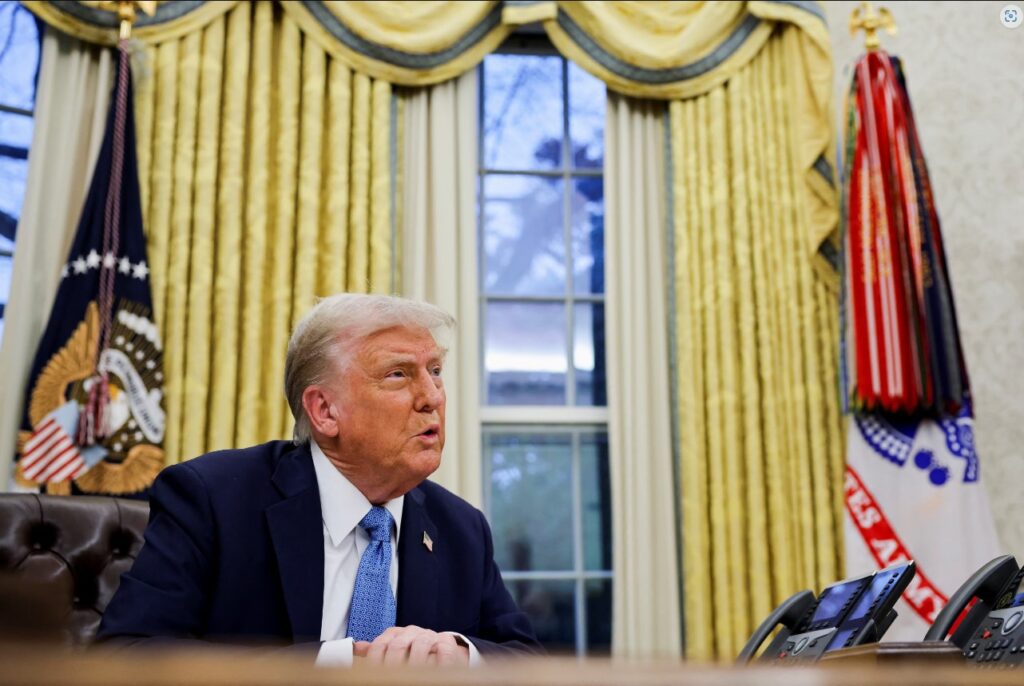With elections in at least 64 countries plus the EU, 2024 has long been promised as the year of the ballot. Labour vs. Conservative, Democrat vs. Republican, left vs. right – the narratives that have dominated political headlines since 2020 have only become crystalised as we’ve moved into 2024.
As we look ahead to November 2024, the United States stands at a domestic and foreign policy crossroads. So, what does the road ahead look like? What could we expect from a second Trump presidency?
In America, the path to Presidency begins (and for many, ends) in Iowa. The Iowa Caucus has historically been the test of vitality for many a presidential candidate – as the adage goes, “when Iowa talks, people listen”.
This year’s Caucus, while traditional in appearance, was unique in its outcome. Former President Donald Trump’s unprecedented margin of victory, amidst legal and political conflicts, sent a message across the world: the presidential election will likely have the same candidates as 2020, but the outcome is anything but predetermined.
Trump’s growing popularity and Biden’s waning approval could see the regulatory and geopolitical positioning of the United States change dramatically come 2025 – a potential reality that politicians and businesses around the world are bracing for.
The former President has in the past threatened to pull the US out of NATO and choke off funding for the United Nations, reportedly has an ‘incoherent’ stance on the Israel–Hamas conflict and has been criticised by Ukrainian President Volodymyr Zelenskyy for using ‘dangerous’ rhetoric about the war in Ukraine. At the same time, Trump’s business-first approach to foreign policy could have socioeconomic implications should he open the door to future US/UK trade negotiations.
Primary primer
Officially, candidates are formally nominated at each party’s national convention, which means 15-18 July in Milwaukee, Wisconsin for the Republicans, and 19-22 August in Chicago, Illinois for the Democrats. But the US election season is long, and the primaries are far from over even though we look to be decisively headed towards a 2020 rematch between Donald Trump and Joe Biden.
The Republican Party primaries started in Iowa on 15 January with former President Donald Trump winning handily, Florida Governor Ron DeSantis nabbing second, and former South Carolina Governor and US Ambassador to the UN, Nikki Haley coming in third. DeSantis dropped out ahead of the New Hampshire primary – and promptly endorsed Trump. Many saw New Hampshire as Haley’s chance to turn the tides, but Trump once again took first with 54.4% of the vote, effectively cementing Trump’s popularity among Republican and conservative voters.
Match point, Mr. Trump?
Not quite. The focus will now turn to Haley’s home state of South Carolina, where the primary is set for February 24th. Trump has been leading in the polls by as much as 30 points, but Haley has pledged to remain in the race and continue to work to drum up support in her home state despite growing pressure for her exit.
On March 5th, also known as Super Tuesday, 16 more states will go to the polls for their primaries, including the delegate rich states of California and Texas.
America’s next Vice President
As Trump increasingly looks like the Republican nominee, speculation around his VP choice is picking up even as Trump and his team remain tight lipped about who the possible candidate will be. The shortlist for running mates is said to include Senator Tim Scott of South Carolina, who embraced Trump after ending his own presidential campaign, and loyal Trump supporters such as Senator JD Vance of Ohio, South Dakota Governor Kristi Noem, and Representative Elise Stefanik of New York.
Meanwhile on the Democratic side, Biden’s Vice President, Kamala Harris, may move into a more visible role as the campaign intensifies – especially with many voters expressing concerns over Biden’s age. Harris is expected to take the lead on advocating for reproductive rights, one of the Democrats’ core election issues, and has also been targeting Trump more directly in recent weeks. However, her low approval rating remains a source of concern for many on the left.
Trump fought the law – but will the law win?
Trump is also looking at a busy schedule outside of the voting booth, with an impressive roster of federal, state and civil court cases continuing to occupy his attention and campaign funds.
Colorado has also jumped into the fray, with Colorado Secretary of State, Jena Griswold, and other state officials now arguing before the US Supreme Court that Trump can’t be on the ballot due to a provision in the 14th Amendment of the Constitution barring insurrectionists from public office. Colorado’s Supreme Court backed the move to remove Trump, but that decision has faced backlash, and the US Supreme’s Court decision will have crucial implications on similar challenges brewing around the country.
About the authors:
Lucy Fyler: Lucy is a Senior Consultant who advises clients across the Health, Government Advisory, and International teams. Based in Portland’s Washington DC office, she is originally from Massachusetts.
Rose Olwell: Rose is a Consultant in Portland’s London office. She advises clients in the International team and is from Austin, Texas.
Giandomenico Di Girolamo: Gianni is an Executive in Portland’s London office and works with clients in the International team. He is half Italian, half Chilean.
David Lampietti: David is an Executive in Portland’s London office. He holds experience working across Portland’s Corporate Communications and Public Affairs teams and is from New York City.





